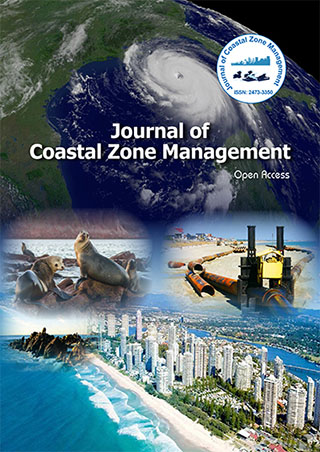Indexed In
- SafetyLit
- RefSeek
- Hamdard University
- EBSCO A-Z
- OCLC- WorldCat
- Publons
Useful Links
Share This Page
Journal Flyer

Open Access Journals
- Agri and Aquaculture
- Biochemistry
- Bioinformatics & Systems Biology
- Business & Management
- Chemistry
- Clinical Sciences
- Engineering
- Food & Nutrition
- General Science
- Genetics & Molecular Biology
- Immunology & Microbiology
- Medical Sciences
- Neuroscience & Psychology
- Nursing & Health Care
- Pharmaceutical Sciences
Diversity of macrophytes in the Red Sea coastal eco-zones
3rd International Conference on Coastal Zones and Oceanography
May 18-19, 2018 Singapore
Mohamed El-Said Farghaly
Suez Canal University, Egypt
Keynote: J Coast Zone Manag
Abstract:
The Red Sea coastal area provides variable ecosystems based on plant primary production. The history of investigations on the Red Sea marine flora dates to the 18th century, but still the picture is not completed although, many valuable regional lists which had been elaborated. Management strategies have clear and planned objectives that aim to create progress. The Red Sea environments are generally subjected to several of these strategies, and their goals are often focused on human exploration, utilization or more recently, the maintenance of biodiversity. In all these cases, marine macrophytes may be the focus of these activities. Macrophytes in the Red Sea provide the fuel of life to the coastal ecosystems. Substrates, salinity, water temperature and water transparency are the most important factors controlling the marine plant biodiversity on the biotic reefs, sea-grass meadows and mangrove swamps. Seasonal field investigations, observations and collections of seaweeds, seagrasses and associated blue-greens were carried out in the Red Sea coastal areas (1975-2014). About 511 algal taxa, 30 blue greens and 481 Seaweeds were encountered in this work. Comparison and analysis of data collected, with occasional collections as well as previously recorded data and measurements demonstrates six eco-zones for the distribution of benthic vegetation along the Red Sea coasts. The six zones are different in the environmental conditions supporting life, reproduction and distribution of seaweeds as well as their diversity, qualitatively and quantitatively. Ten species of sea-grasses had been encountered in this study for their support of life to many epiphytic algal species as well as the blue greens inhabitants in their meadows. The diversity and distribution of macrophytes could illustrate the variability and difference of eco-zones in this small sea or baby ocean, the Red Sea. In comparison with macrophyte lists collected and recorded from the western Indian Ocean proved the Indo-Pacific origin of the Red Sea benthic flora. A small number of species are endemic. Many taxonomic problems had been solved during these investigations, other questions emerged. In conclusion, the results of this work could illustrate the need for reference collection of the Red Sea marine flora to conserve the biodiversity of macrophytes.
Biography :
Mohamed El-Said Farghaly has completed DSc in Natural Sciences from USTL Montpellier, France. He has over 40 years of experience in biological and environmental problems in tropical and sub-tropical ecosystems, pollution control and management. Being a Founder Head of Marine Science Department, Technical Advisor and Consultant, he had participated and contributed in solving many environmental problems. From 1975 to till date, he is running and conducting researches on the Mediterranean and the Indo-Pacific seas with special interest to the reef problems in the red sea and adjacent coasts. He is also a member in many scientific societies in Europe having good contact with the scientific institutions visited in USA, Australia, Europe and Arab countries. He is the author of 118 research works, scientific or environmental reports, theses and notes.
Email:saidfarghaly6@gmail.com
